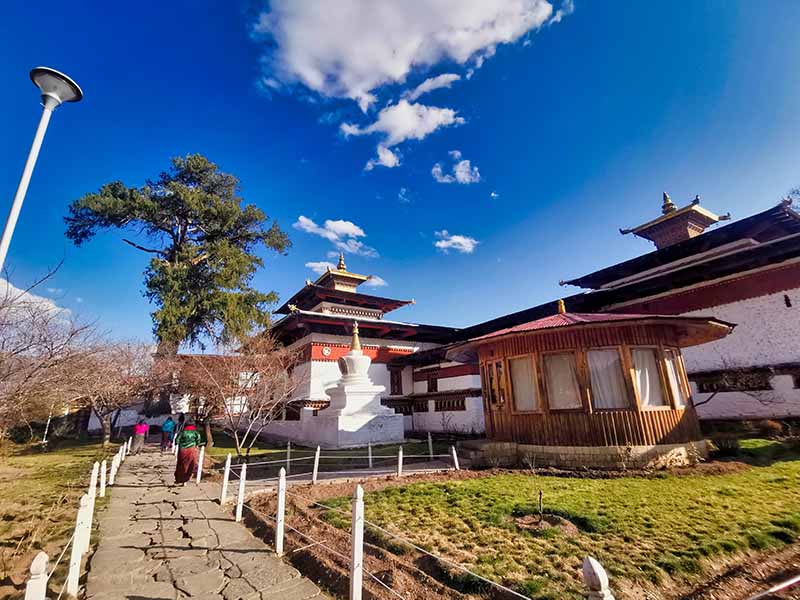Thimphu is the capital of Bhutan and it is also the largest city in the country, located in the western region. Thimphu is also the political and economic hub of the country where it houses most of the important political buildings in the country. Many of the locals from rural places also migrate to Thimphu to seek employment. This vibrant city contains a rustic charm that has much to offer to travellers.
Buddha Dordenma also known as Buddha Point is definitely an attraction in Bhutan. This sitting Buddha statue measuring 51.m in height is one of the largest sitting Buddha statues in the world. The Buddha Dordenma statue is made of solid bronze and gilded with gold paint, including all of the 125,000 smaller Buddha statues that have been placed within the large statue; 100,000 statues of which are 8-inches-tall and 25,000 statues of which are 12 inches tall. Visitors can enter into a majestic meditation hall with beautifully carved pillars painted in gold, and a gold statue of the four-faced Buddha. While walls are elegantly painted with murals of Buddhism. This picturesque place will definitely have a spot on your IG feed. From Buddha Point, you can also have an overview of the Thimphu city.
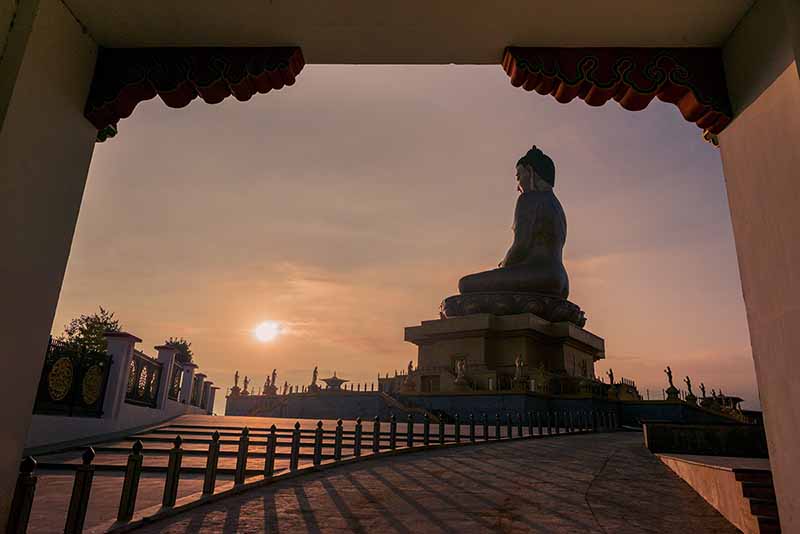
Tashichho Dzong (fortress), or commonly known as Thimphu Dzong, is an impressive structure situated in the northern part of Thimphu city. Tashichho Dzong has been the seat of the government since 1952 and currently houses the throne room and offices of the king, the secretariat and the ministries of home affairs and finance. As a tourist, you will not be allowed to visit the Royal and government offices, but you can certainly visit the monastery and admire the marvellous architecture and surroundings of the dzong. One of the most prominent things you will notice upon arriving at the dzong would be the Bhutan national flag flying splendidly outside the building. If you visit Bhutan from April to July, you will see a stretch of colourful rhododendron flowers greeting you along the pathway. Or if you visit in March, you may also be in luck to see the blooming cherry trees!
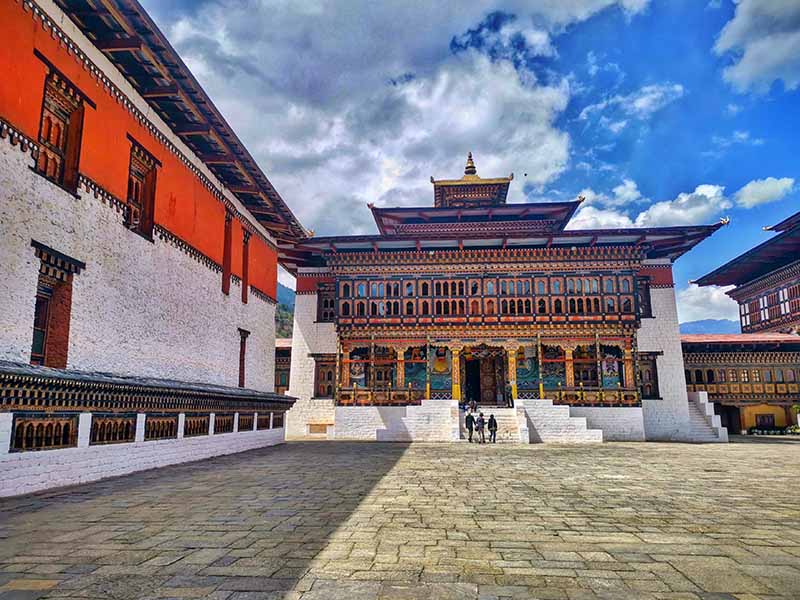
For the best Bhutanese products you will find in Bhutan, visit the The Craft Gallery, a store located in Thimphu town. The two-storeyed shop showcases some of the finest crafts by the local artisans. The Craft Gallery is a project of the Gyalyum Charitable Trust, initiated by Queen Mother Sangay Choden Wangchuck. Aside from promoting authentic quality Bhutanese products, the Gallery also strives to provide a sustainable stream of income to the artisans. Thus, by purchasing from the Gallery, you are directly contributing to the cause of various non-profit organisations and local artisans. You can find all kinds of local products such as shawls, honey, embroidery products, jewellery and textiles. It’s definitely a great place for a one-stop souvenir shopping if you’re planning to grab some souvenirs for friends and family back home.
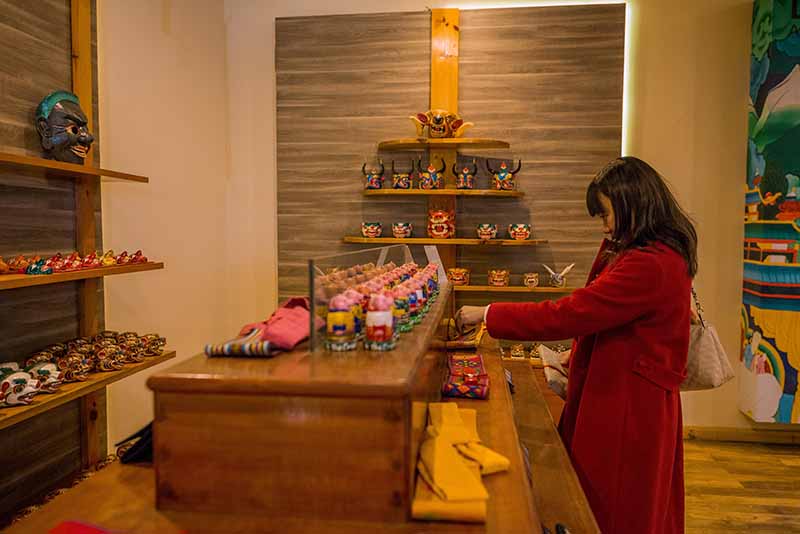
Weaving is an integral part of the Bhutanese culture and tradition. Through the Royal Textile Academy, you will be able to learn about the textile heritage, different weaving styles and the intricacies of the Bhutanese textile. You will get to see the different intricate patterns of the Bhutanese textiles learn about the patterns that originated from the different districts. Upon visiting the centre, you will be able to better appreciate the beautiful traditional costumes, Kira and Gho that you see the locals wear on the street.
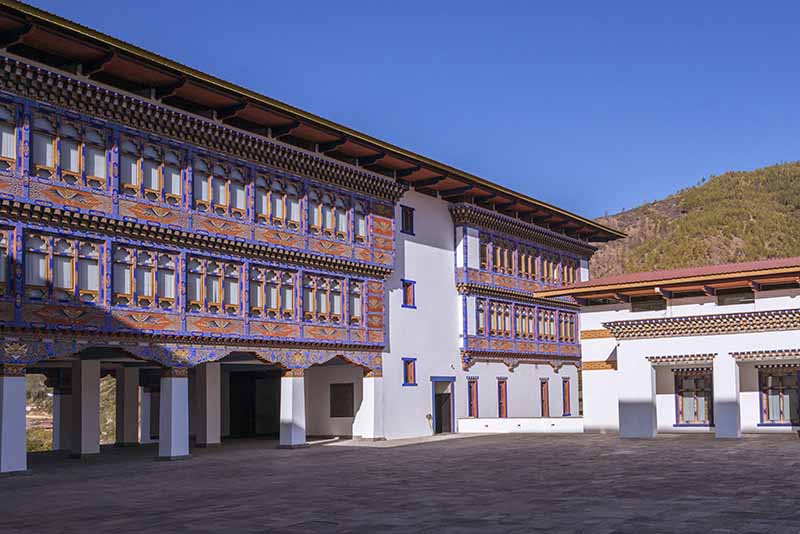
Simply Bhutan is an interactive museum that offers you an excellent guided introduction to different aspects of the traditional Bhutanese life. This place is a great place for your induction to Bhutan. For instance, you will get to understand how to dress up in Bhutanese traditional clothes, how to distill ara (rice wine), and you will even get to enjoy some local butter tea, watch the local dance performance as well as learn how they construct their beautiful homes out of rammed earth. The infrastructure in this museum primarily portrays the ancient Bhutanese architecture. The structure of the museum itself is built reusing old timber, door and window frames and numerous other materials from demolished houses. Unlike most museums where you aren’t allowed to touch the artifacts or take photographs, you are free to snap away freely here. You can also try a hand at the archery and the local dart game known as Khuru.
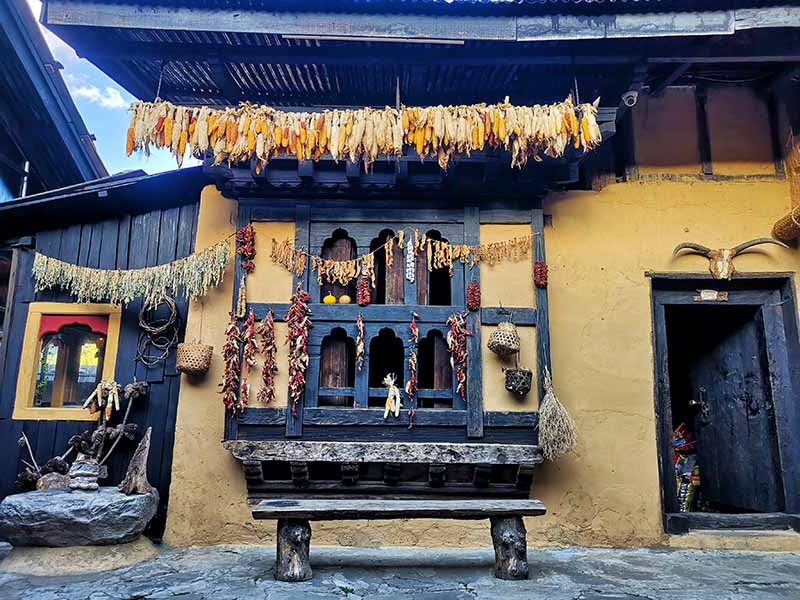
Folk heritage museum is set inside a three storeyed 19th century traditional house. The museum provides visitors with a glimpse of traditional Bhutanese lifestyles and artifacts in a traditional household. You will see a collection of household objects, tools and equipment in a typical Bhutanese home. The museum perfectly recaptures the rural setting and ambience of a traditional household as you get to witness the paddy, wheat and millet fields set up, a traditional water-mill with mill stones that is more than 150 years old, as well as traditional kitchen gardens and hot stone baths that are famous throughout the country. Visiting the museum will definitely allow you to learn more about the local culture, customs and traditions.
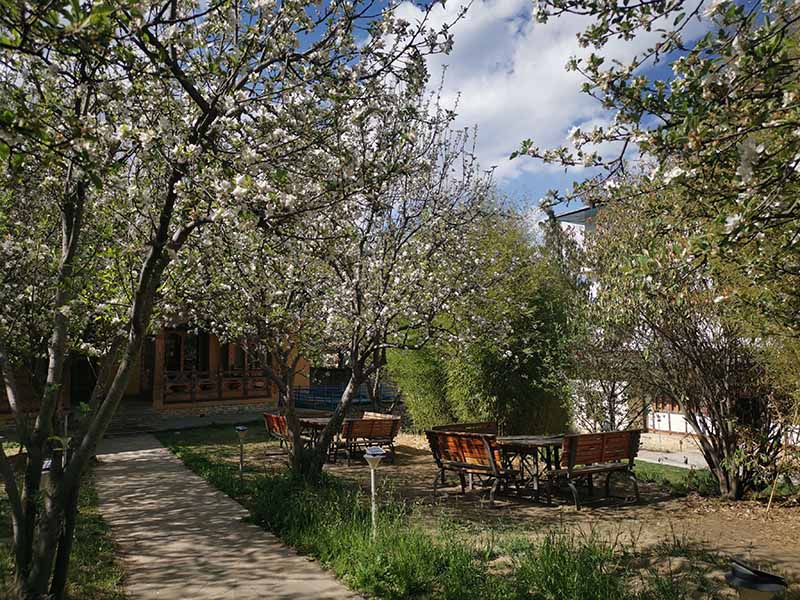
The Takin Preserve is a wildlife reserve area for Takin, the national animal of Bhutan. It’s also commonly known as the Takin Enclosure of Takin Zoo. The mini zoo was converted into a preserve when it was found that the Takin refrained from inhabiting the surrounding forest even when set free. The declaration of Takin as the national animal was related to the local myth from 15th century. The famous Tibetan saint, Drukpa Kunley, popularly known as the “Divine Madman” is said to be responsible for the creation of this unique creature called Takin, a gnu goat that resembles an ox but more closely related to a sheep. Some has claimed that Takin is one of the most queer looking animals that they have ever seen!
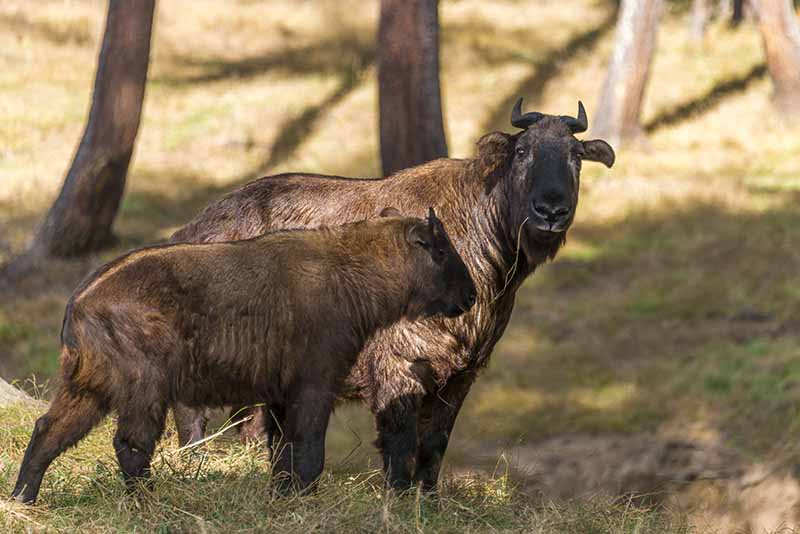
National Memorial Chorten is a prominent stupa erected in 1974 in honor of the father of modern Bhutan, the third king of the country, His Majesty Jiqme Dorji Wangchuck. The stupa is a prominent landmark located in the heart of Thimphu city with its golden spires and bells. The Memorial Chorten is designed as a Tibetan style chorten, also called the Jangchup Chorten, has the design of a classical stupa pattern, with a pyramidal pillar crowned by a crescent moon and sun. The distinctive feature of the chorten is the outward flaring of the rounded part giving it a pyramidal shape of a vase. Do always remember to circumambulate in a clockwise direction while you are there as with any religious structures in Bhutan. You can see many elderly Bhutanese hanging out near the large prayer wheels, catching up with one another or offering prayers with the prayer beads clutched on their hands.
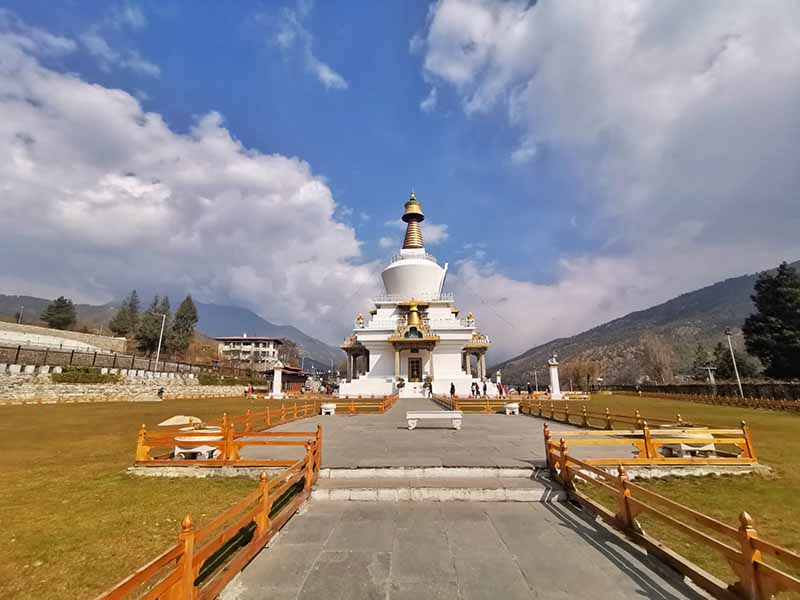
The Dochula Pass is located between Thimphu to Punakha at an elevation of 3,100 metres. There are 108 memorial chortens or stupas built by the eldest Queen Mother, Ashi Dorji Wangmo Wangchuck, in honour of 108 Bhutanese soldiers who perished during the battle against Assamese insurgents in 2003. There is also a small monastery, Druk Wangyal Lhakhang nearby the monastery that was built in honour of the fourth king of Bhutan, His Majesty Singye Wangchuck who was at the forefront of the battle that eventually led the country to victory.
In commemoration of the occasion, there is a Dochula Druk Wangyel Festival held annually on December 13th in the open area in front of the temple.
This scenic spot is definitely a photography haven for the photo enthusiasts. If you are lucky, you can even see the gorgeous himalayan mountains from the pass including Gangkar Puensum, the highest mountain in Bhutan. During the winter season, the weather will be extremely chilly, do remember to have your jacket on! Sometimes, the pass might be even covered in snow.
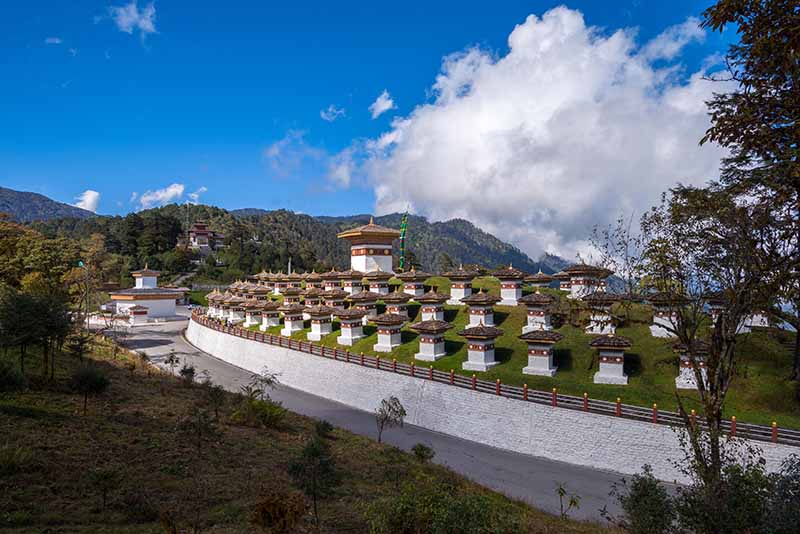
Paro is a significant district in Bhutan with many sacred sites and historical buildings. It is also where the one and only international airport for the country is located. It is the perfect blend of ancient and modern charm.
This iconic landmark of Bhutan is no stranger to the world! In fact, a trip to Bhutan is said to be incomplete without a visit to this majestic temple perched atop the cliffside some 2,600 feet above. Seeing this spectacular monastery with your own eyes will make you wonder how was this architectural feat accomplished in the 16th century! The trek up and down Tiger’s Nest can take anywhere between 3.5 hours to 9 hours depending on your fitness. It is advisable to start your trek early to avoid the afternoon heat. Remember to pack light and wear comfortable shoes for a smooth trekking experience. And of course, enjoy the gorgeous views along the way and take plenty of photos to preserve your memories! Throughout the climb, you will see many locals of all ages including toddler as young as 2 years old making their way up the Tiger’s Nest. Parents carrying their infants on the back or elderly on walking sticks are also a common sight. They will definitely serve as a motivation for you to trek your way up to the peak!
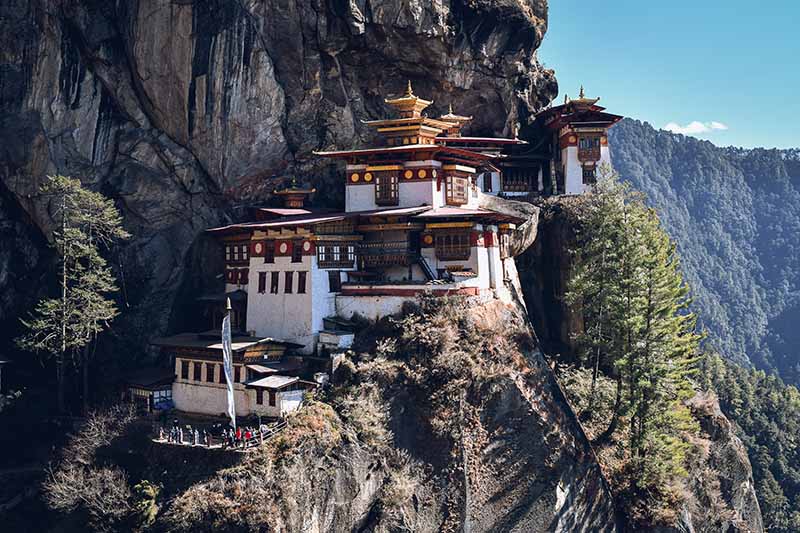
Paro Dzong, also known as Rinpung Dzong, “Fortress of the Heaps of Jewels” is a very distinguished building in the Paro district. You can also get a glimpse of it when your flight lands in Paro International Airport. The dzong was built in 1644 under the instruction of Zhabdrung Ngawang Namgyel. Formerly, it used to serve as a fort to defend Paro valley against Tibet invasions. This ancient fortress is closely situated near the Paro town and is easily accessible. Like most dzongs, it currently houses the monastic body as well as the district government offices. During the popular Paro Tshechu (masked dance festival), usually held in March, thousands of people will flock the courtyard of the dzong in their best attire to join in the special occasion.
Some of the scenes from Bernardo Bertolucci’s 1993 film Little Buddha were also filmed in Paro Dzong.
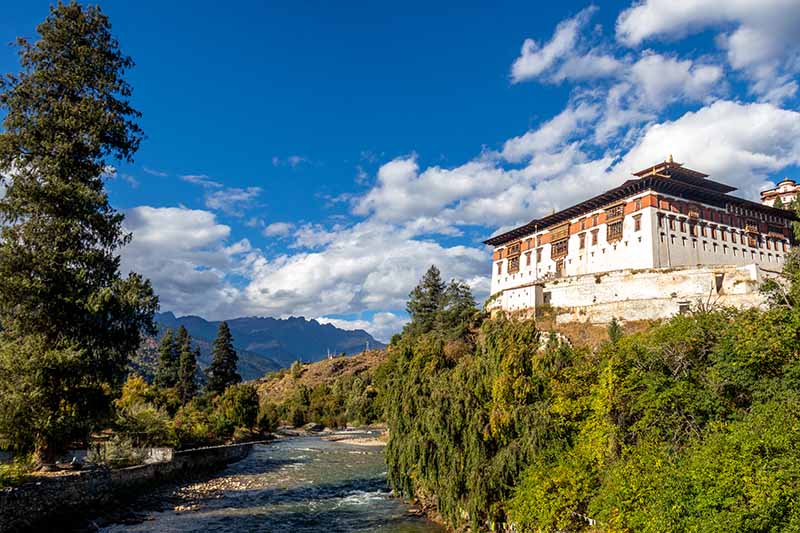
Kyichu Lhakhang (also known as Lho Kyerchu or Kyerchu) is the oldest and one of the most beautiful temples in Bhutan. It’s also revered as one of the most beautiful worship sites and a sacred jewel of Bhutan. The original temple was said to have been built overnight and used to be a smaller structure prior to the expansion. This spectacular temple has a very quiet and serene ambience that fosters a contemplative space. You are sure to feel more calm and relaxed as you stepped foot into this sacred site. You can also see many elderly circumambulating the temple spinning the prayer wheels. There is also a magical extraordinary orange tree outside the courtyard that is said to bear fruits all year round!
